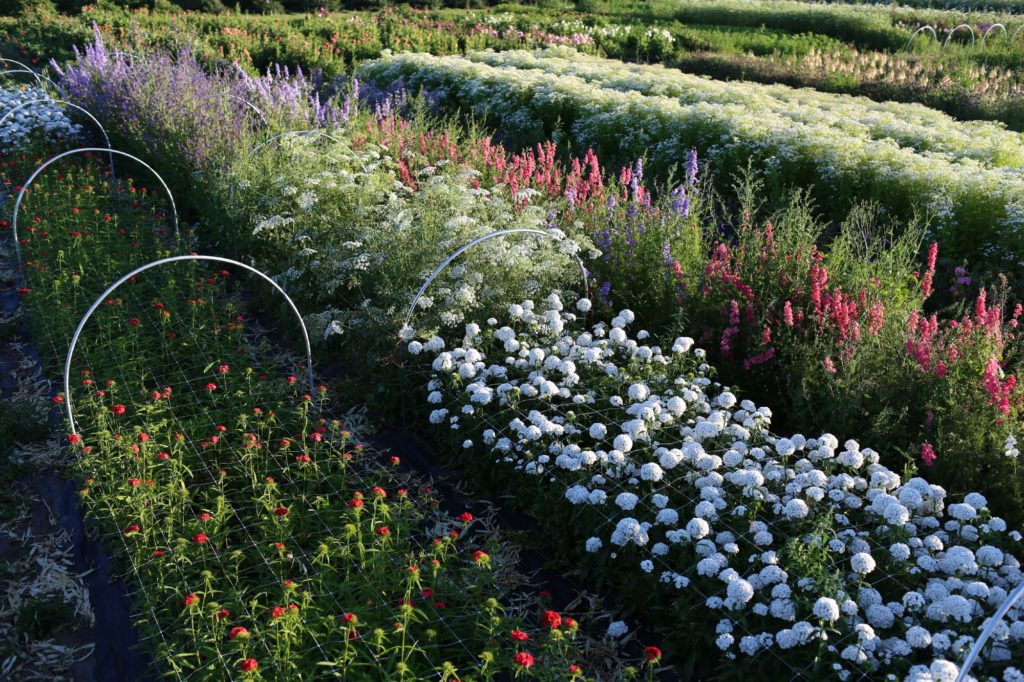 If you’re new to flower growing or you’ve dabbled for a little while and now you’re ready to get serious, spending a little time getting clear is an absolute must. Today, we’re going to do a little assessment to figure out what you’ve got to work with, what limitations you have to consider, and what your flower needs are. These details are critical in making a good, solid plan that will reward you with a successful, flower-filled season.
If you’re new to flower growing or you’ve dabbled for a little while and now you’re ready to get serious, spending a little time getting clear is an absolute must. Today, we’re going to do a little assessment to figure out what you’ve got to work with, what limitations you have to consider, and what your flower needs are. These details are critical in making a good, solid plan that will reward you with a successful, flower-filled season.
So, before we dig into the nitty gritty how-to posts, I want you to take a little time and answer these six important questions. The process will help narrow down your choices, and you’ll get really clear, really fast. From here planning will be so much easier.
Ok, here we go:
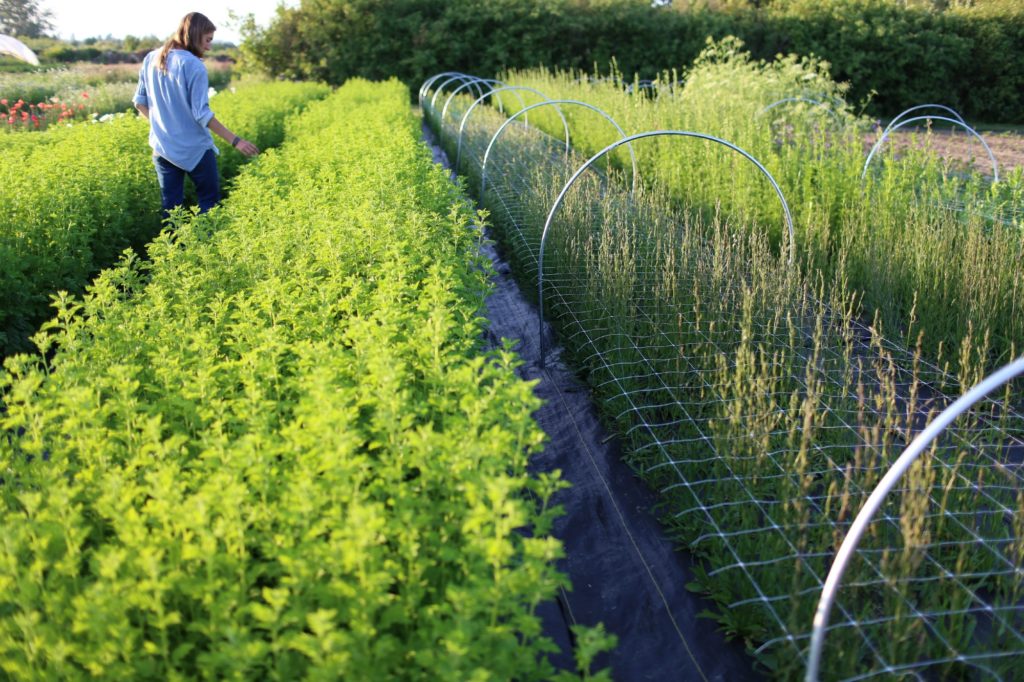 How much space do you have to work with? Even if you only have a few pots on your deck or a small garden plot in your backyard, it’s still possible to have fresh flowers in your life. But before you go hog wild ordering up a storm, it’s important to get an idea of how much good growing ground you can actually set aside.
How much space do you have to work with? Even if you only have a few pots on your deck or a small garden plot in your backyard, it’s still possible to have fresh flowers in your life. But before you go hog wild ordering up a storm, it’s important to get an idea of how much good growing ground you can actually set aside.
Almost all of the flower varieties we offer in the Floret Shop prefer full sun, so try to find a location that receives at least six hours of direct sunlight a day. If you only have a shade to work with, don’t worry—I’ll give you some suggestions for varieties that like those conditions too.
You’ll want to go out and take measurements of the space(s) you have to work with so that once we dig into the planning steps you can be as accurate as possible. I have a 2-acre field map, with every single bed and hoophouse drawn out. This really, really helps me stay in touch with the actual space I have to fill.
How long is your growing season, and what’s your climate like? Factors like where you live and how long your growing season lasts will dictate what varieties will grow and thrive in your area. For instance, one of my farming friends in northern Vermont only has 90 frost-free days during which to grow flowers! So they stick to cool weather-lovers that are fast to flower, and anything heat-loving and tender must be grown in a hoophouse. Another grower friend is gardening in the high desert. Spring lasts just a few short weeks, essentially jumping from winter right to summer. Cool weather-lovers like sweet peas and honeywort must be grown under shade cloth, otherwise the high temps and high light will fry their tender growth.
Even though our farm is tucked into a valley with a pretty long frost-free growing season, April 15 to October 15, we rarely get temps over 90°F in the summer. So things that thrive outside for most gardeners, like basil, tomatoes, peppers, and cockscomb must be tucked into a hoophouse for us, otherwise they never fully ripen.
We’ll dig into climate-specific recommendations in the upcoming posts, but take this time now to think through and better understand the climate limitations in your area.
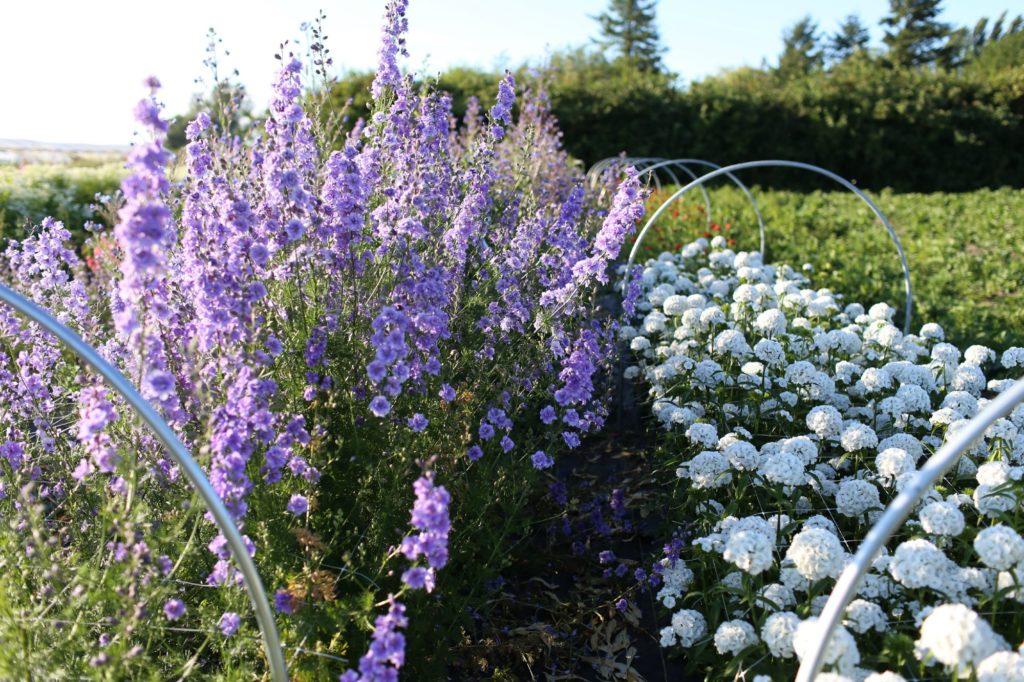 How much time and energy do you have to devote to this project? This is the question I hate to answer the most! While I’ve figured out how to squeeze ridiculous amounts of flowers into our tiny plot of land, I still haven’t cracked the code on adding more hours to the day. If you work a full-time job or have to travel to your cutting garden, or your days are filled with wrangling little people, beware of biting off more than you can chew.
How much time and energy do you have to devote to this project? This is the question I hate to answer the most! While I’ve figured out how to squeeze ridiculous amounts of flowers into our tiny plot of land, I still haven’t cracked the code on adding more hours to the day. If you work a full-time job or have to travel to your cutting garden, or your days are filled with wrangling little people, beware of biting off more than you can chew.
When I first started growing flowers I was also a young mom. The majority of my days were filled with keeping a very inquisitive preschooler occupied and her wild toddler brother out of trouble. As my passion for flowers grew, so did my frustration with how little time I actually had to devote to growing them. I remember crying in my weed-filled garden more days than I can count because I just couldn’t keep up with it all.
As time went on I found some great ways to manage the workload and eventually keep up, which I will share with you soon. But what would have helped me more than anything back then was to take it a little easier. I thought I had to do it all, RIGHT NOW, which created a mountain of work and stress for me.
How much money can you invest in your garden this season? While growing your own flowers will reward you with both a bounty of blooms, and if you’re in business, some cash too, getting a garden set up does require an initial investment.
If cash is tight or you’re just starting out, one of the best ways to get your feet wet without breaking the bank is by growing annual varieties from seed. Depending on the size of the garden you have, a pretty small investment in seeds and compost can reward you with an incredible abundance of flowers and foliage just a few months down the road.
During the early years, in hopes of increasing our farm’s revenue, we doubled our growing ground. But in the chase for more income, we failed to account for just how much money was required to get a new 2-acre field set up and in working order. With the land already rented and ready to cultivate, we naively skipped the most important steps to growing great flowers (feeding the soil and providing steady water) and instead just threw thousands of small seedlings in the ground. That year almost did us in!
It’s important to remember that whatever space you’re going to cultivate, you also need to factor in compost, fertilizer, some type of irrigation, plus seeds and bulbs.
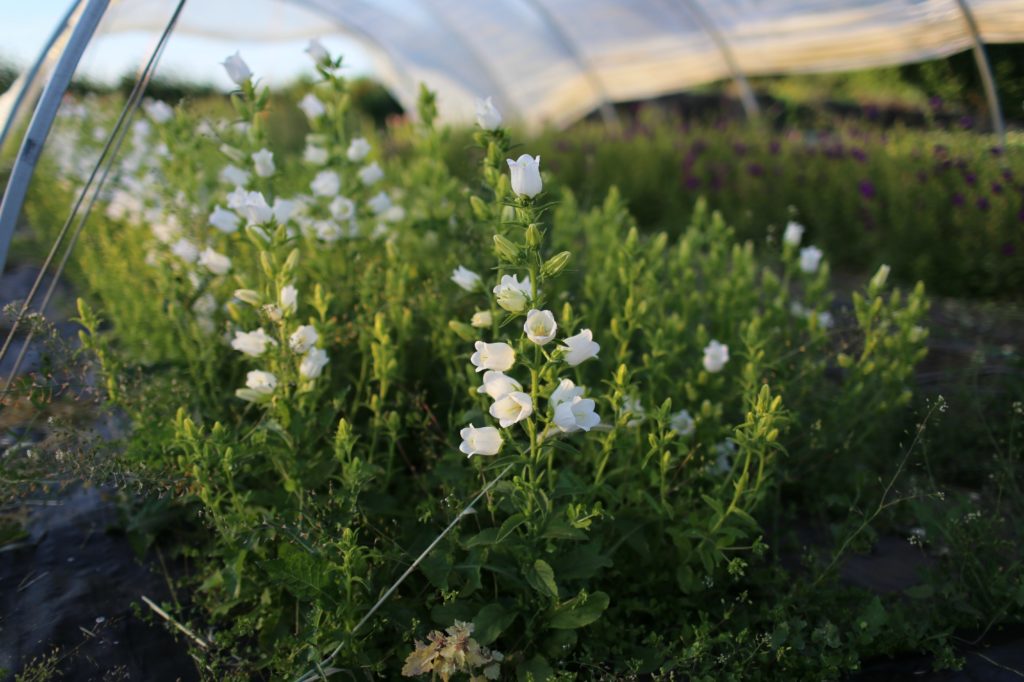 What are your floral needs? Whether you want to grow truckloads of flowers for mixed bouquets, or interesting ingredients to supplement your floral design business during the wedding season, or just have fresh flowers for your home, your needs should define what varieties you choose and how many plants you ultimately grow.
What are your floral needs? Whether you want to grow truckloads of flowers for mixed bouquets, or interesting ingredients to supplement your floral design business during the wedding season, or just have fresh flowers for your home, your needs should define what varieties you choose and how many plants you ultimately grow.
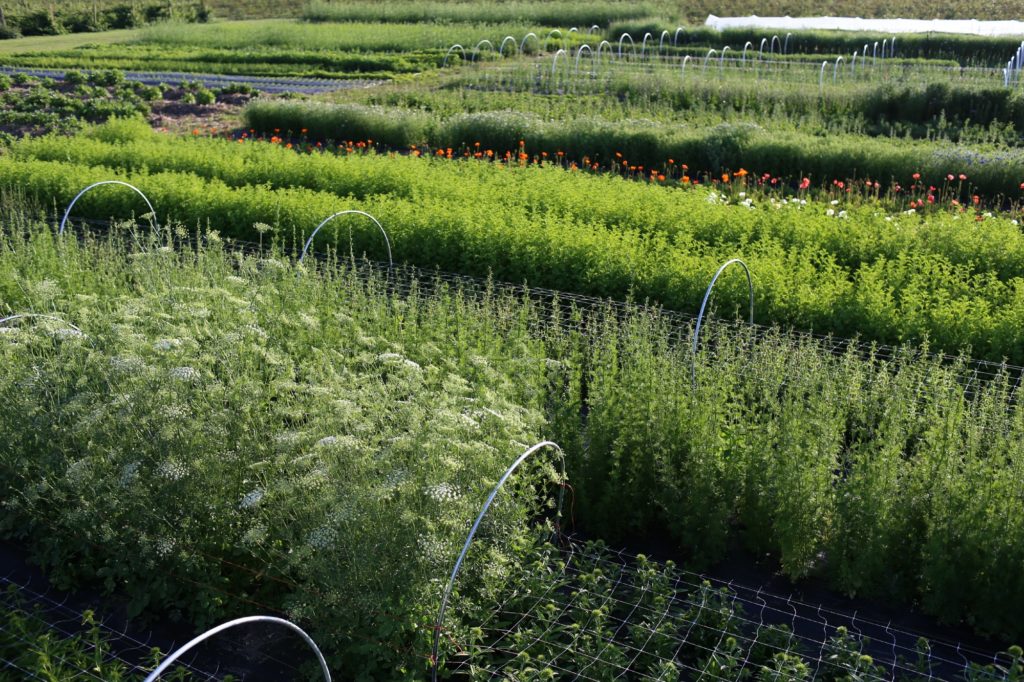 Lastly, WHY are you growing cut flowers? I know this probably seems like a silly question, but during the height of summer, when the mosquitoes are thick, and the flowers are blooming faster than you can cut them, remembering this one simple thing will help to keep things in perspective. It’s your North Star.
Lastly, WHY are you growing cut flowers? I know this probably seems like a silly question, but during the height of summer, when the mosquitoes are thick, and the flowers are blooming faster than you can cut them, remembering this one simple thing will help to keep things in perspective. It’s your North Star.
For me, growing flowers helps me to be more centered and present in the moment. I have a tendency to live in the future. Flowers pull me out of my head and into the right here and right now. I also LOVE to share the beauty and magic of flowers with other people. Nothing brings me more joy than handing someone a bundle of blooms.
I’d love to hear about your questions and plans in the comments below. What you are struggling with, what questions do you still have, and are there any tricks or resources you love that you could share with other readers?
Please note: If you submit a comment below and it doesn’t show up right away, sit tight; we have a spam filter that requires we approve most comments before they are published.
If you find this information is helpful, I would love it if you would share it with your friends.

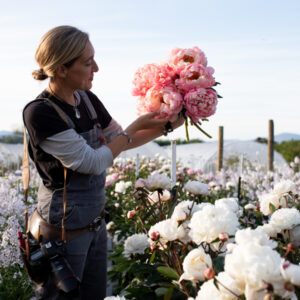

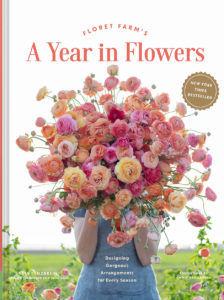
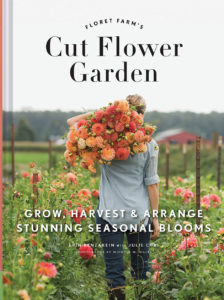


Natasha Cupid-Fournillier on
I live in the Caribbean
Cut flower garden is new to me
I am a nurse and have been planting vegetables for over 20 years.
I am now experimenting as to which flowers can grow in my climate since, we only have 6 months of rain and 6 months of mostly sun with minimal rain